Contents
- 1 Explore Must-See Highlights From Milan Design Week
- 1.1 “L’Appartamento” by Artemest
- 1.2 “War Flags” by Philippe Starck for Interni
- 1.3 “The Gift” by Chen Yaoguang for Interni Cre-Action
- 1.4 Hermès by Charlotte Macaux Perelman
- 1.5 “Mission Aldebaran” by Marc-Antoine Barrois and Antoine Bouillot
- 1.6 “Making the Invisible Visible” by Lachlan Turczan for Google
- 1.7 “Formica (R)evolution: A Visual Journey From the 1930s to the 1980s” by Formica Group
- 1.8 “Portal” by Charles Birshaw with Decibel, Vizcom, and Caracol
- 1.9 “Components of Space” by DeltaLight
- 1.10 “Library of Light” by Es Devlin for Salone del Mobile and Pinacoteca di Brera
The Gift. Photography by Saverio Lombardi Vallauri/Courtesy of Interni Magazine.
Each April, Italy’s capital city throws open the doors to its most storied apartments, palazzos, courtyards, and gardens for all the offsite events accompanying Salone del Mobile and its imminent emerging designer event SaloneSatellite. These spaces are a heady backdrop for immersive installations designed to seduce and dazzle visitors, who were, at times, waiting hours for access in block-long queues. From richly layered interiors by global design stars to dystopian provocations in botanical gardens, here are 10 standout installations spotted during Milan Design Week 2025 that captured the spirit of experimentation and storytelling at the heart of this year’s festival.
Explore Must-See Highlights From Milan Design Week
“L’Appartamento” by Artemest
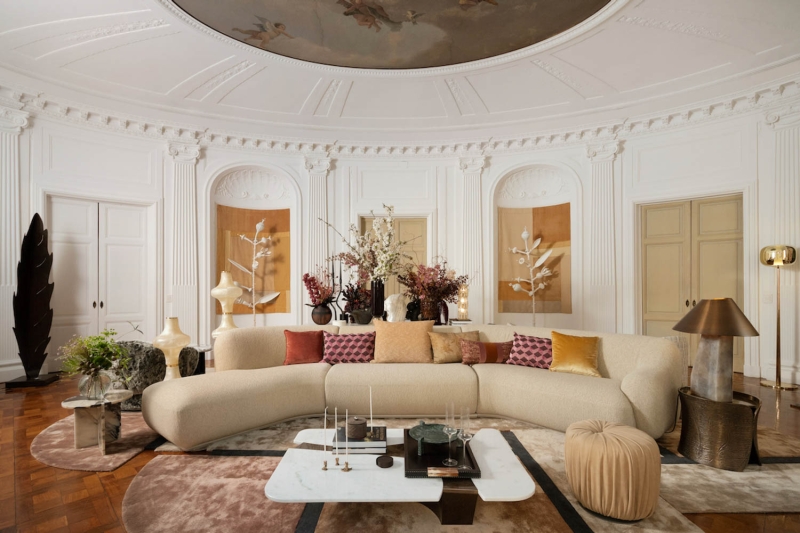
The Grand Salon by Meyer Davis. Photography by Tomaso Lisca and Luca Argenton.
Visitors to the third edition of L’Appartamento by Artemest earned a highly exclusive peek inside Palazzo Donizetti, a 19th-century architectural masterpiece with vaulted ceilings, frescos, and an elliptical staircase. For the installation, six interior design firms—1508 London, Champalimaud Design, Meyer Davis, Nebras Aljoaib, Romanek Design Studio, and Simone Haag—received a room to give an opulent makeover. From Haag’s dramatic foyer fusing vintage hues and collectible pieces to Aljoaib’s sculptural take on a modern study and the inviting grand salon by Meyer Davis with its graceful curved sofa, the installation was a feast to the eye with each tastefully appointed room.
“War Flags” by Philippe Starck for Interni

War Flags. Photography by Saverio Lombardi Vallauri/courtesy of Interni Magazine.
In a chilling metaphorical series, Philippe Starck teamed up with ‘Hate Unlimited Korporation,’ “a company that has long been dedicated to promoting hate in all its most liberated shapes and sizes throughout the world,” according to a statement, for a series of thought-provoking flags. Presented in the Brera Botanical Garden as part of “Interni Cre-Action,” and produced in collaboration with Babinet & Co, the flags were erected across the idyllic garden’s leafy paths in sharp contrast to the botanical plantings below.
“The Gift” by Chen Yaoguang for Interni Cre-Action
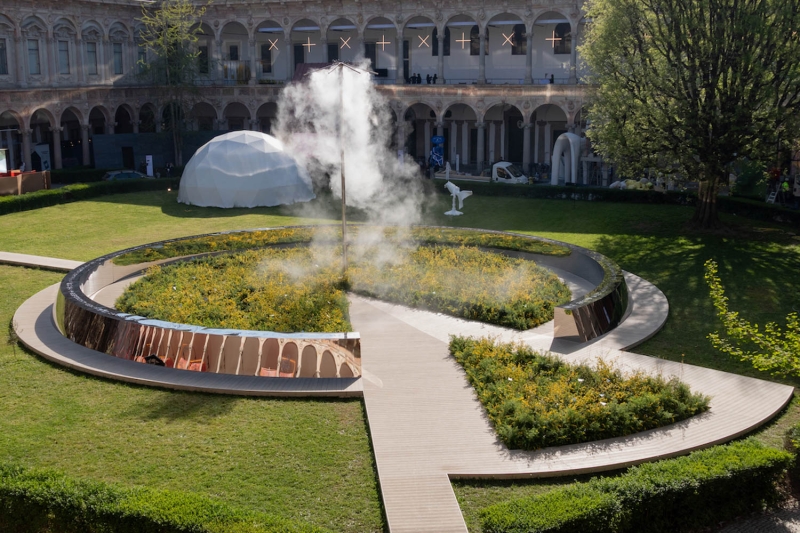
The Gift. Photography by Saverio Lombardi Vallauri/courtesy of Interni Magazine.
A circle of flowers bloomed within a mirrored ring at the heart of the central courtyard at the Università degli Studi di Milano Statale. Inspired by mooncakes, a traditional Chinese pastry, and rendered in stainless steel with solar-powered lighting and 2,700-square-feet of blooms, “The Gift” by Chinese designer Chen Yaoguang in collaboration with KUKA Home for Interni Cre-Action was meant to be just that. Upon the conclusion of Milan Design Week, the lucky visitors received the flowers as gifts.
Hermès by Charlotte Macaux Perelman

Hermès. Photography courtesy of Hermès.
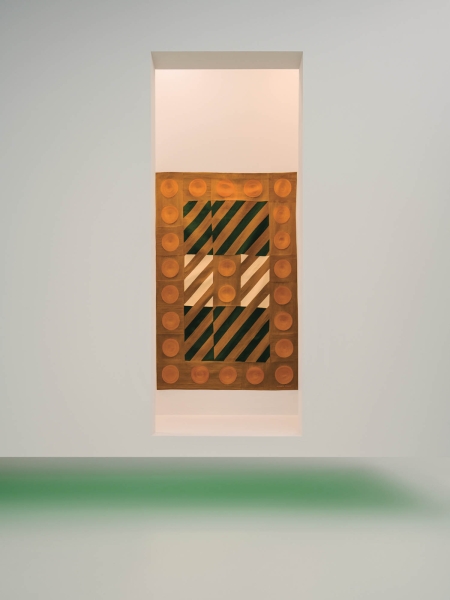
Hermès. Photography courtesy of Hermès.
In theatrical architectural staging, suspended boxes in pristine white created a glowing white labyrinth to frame the new home collection from luxury fashion house Hermès. In vibrant, cheerful contrast, projections splashed halos of brightly colored light onto the floor and walls showcasing tactile leather accessories, handwoven textiles, and porcelain objects. Designed by Charlotte Macaux Perelman, architect and artistic director of Hermès collections for the home, with curator and publisher Alexis Fabry, the installation was held once again at Milan events venue La Pelota.
“Mission Aldebaran” by Marc-Antoine Barrois and Antoine Bouillot
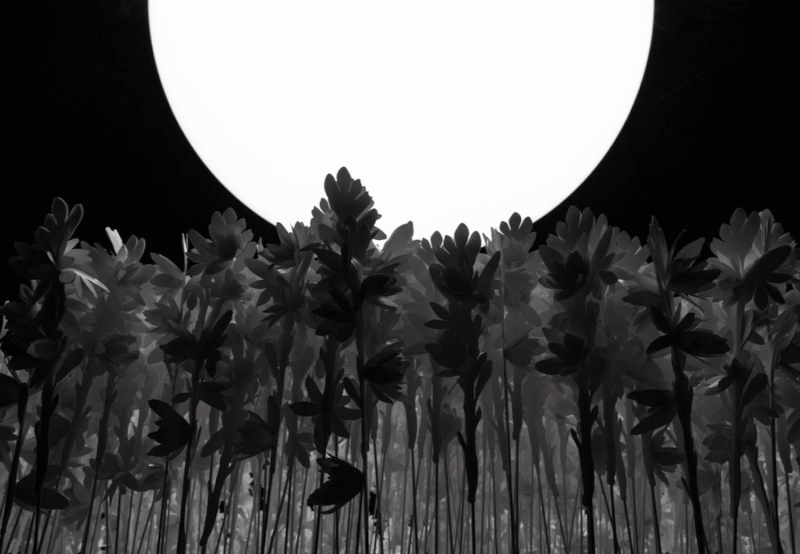
Mission Aldebaran. Photography courtesy of Marc-Antoine Barrois.
With tuberose-scented scented paper flowers, fashion designer Marc-Antoine Barrois took home this year’s Fuorisalone Award for best installation in his Milan debut. “Mission Aldebaran,” sent visitors into a mirrored cube, where they had to navigate a labyrinth of darkness before emerging into a radiant clearing lit by a pulsing star illuminating the flowers. Conceived with designer Antoine Bouillot, the installation marked the launch of the Marc-Antoine Barrois perfume Aldebaran and a limited-edition collection of stools and benches topped with sculptural stones (designed by Bouillot and Barrois). Read more about the design in an interview with the creators.
“Making the Invisible Visible” by Lachlan Turczan for Google
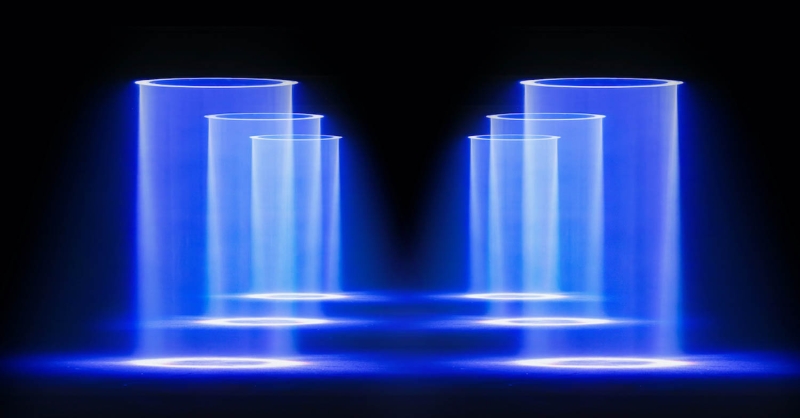
Making the Invisible Visible. Photography © Lachlan Turczan.
What does it take to bring an idea to light? In a theatrical demonstration taking this literally, light and water artist Lachlan Turczan teamed up with Google to present a series of immersive environments sculpted by light. Responsive to body movement, large scale optics allowed interaction, bending, flowing and solidifying into large geometric forms. As visitors pass through the glowing spaces, they are guided toward an exhibit displaying Google’s entire hardware portfolio.
“Formica (R)evolution: A Visual Journey From the 1930s to the 1980s” by Formica Group

Desk by Gio Ponti, fabricated from Formica. Photography copyright Sara Magni/courtesy of Formica.
A teacup, a glass, a bag leaning against a chair, an umbrella—all of these everyday objects were cleverly made of paper by Yoko Miura for “Formica (R)evolution,” in a celebration of the versatile material. The immersive, decades-spanning exhibition tracing the legacy of Formica laminate—itself made of paper treated under high temperatures—explored its historic embrace by Gio Ponti, Charles and Ray Eames, and others, from its 1930s debut to its 1980s pop-culture heyday in an innovative setting including a red-draped time tunnel of iconic surfaces. The exhibition was curated by Daniele Lorenzon and Alessandro Pedretti and staged by Sopa Design Studio.
“Portal” by Charles Birshaw with Decibel, Vizcom, and Caracol
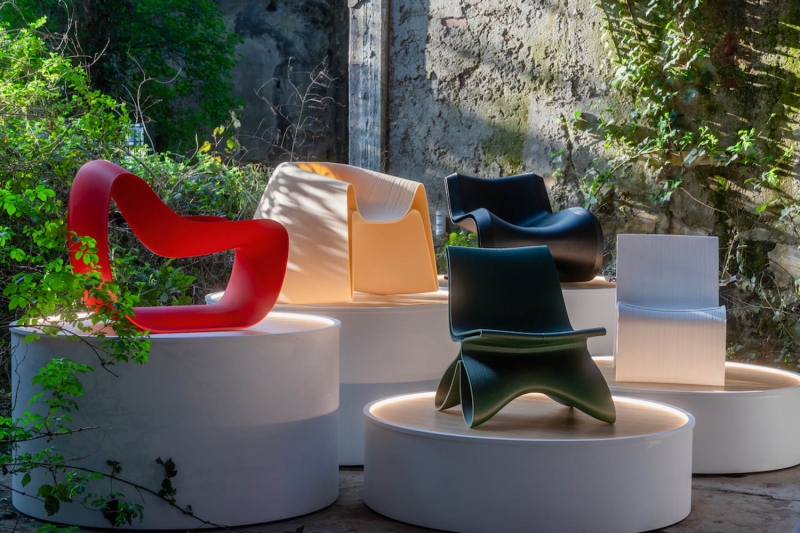
Noknok Sprout Lounge Chairs. Photography courtesy of Decibel.
What if you could print out a chair from recycled materials in just a few hours? In a hopeful vision of a circular design future, an installation at Alcova did just that—highlighting the huge potential and recent advancements in 3D technology. Designed by industrial designer Charles Birshaw, the installation explored the future of design and fabrication through robotic 3D printing, AI-assisted creativity, and sustainable production. Ten unique chairs by both emerging and established designers were featured in the installation, while the robotic printer actively worked on site. Highlights include Sprout (in green) by design studio Noknok, inspired by the moment a seed breaks through the soil, and designer Karim Rashid’s Monark (in black), which folds back upon itself in a sleek, sensual form. The installation was conceived in collaboration with creative tool developer Vizcom, large-format robotic additive manufacturer Caracol, and Decibel, a firm dedicated to transforming waste via large-scale 3D printing.
“Components of Space” by DeltaLight
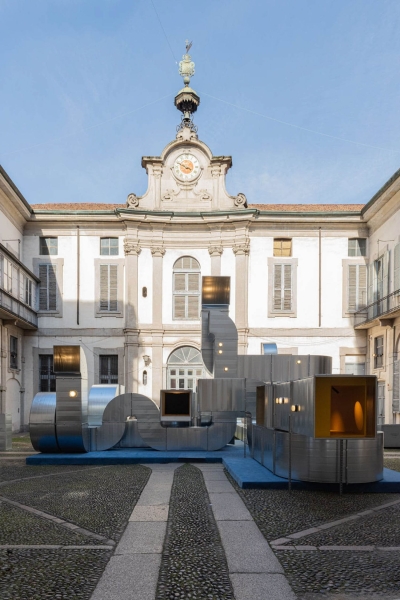
Components of Space. Photography by Nathalie Krag/courtesy of MoscaPartners.
The historic Palazzo Litta was packed to the brim in the large-scale group show “Variations” curated by MoscaPartners. Among the highlights, “Components of Space” by DeltaLight used a grid of silver ventilation ducts to craft a surreal metallic canopy and take over an interior courtyard. The intriguing framework, channeling air, light and sound, pointed to the unexpected beauty found in industrial architecture.
“Library of Light” by Es Devlin for Salone del Mobile and Pinacoteca di Brera

Library of Light. Photography by Monica Spezia/courtesy of Salone del Mobile.
In the 17th century Cortile d’Onore, a historic internal courtyard in Brera, a 60-foot cylindrical sculpture spun slowly, revealing mirrored shelves filled with 3,000 books. A love letter to libraries, light, and collective memory, “Library of Light” by Es Devlin reflected sunlight during the day via angled mirrors. Illumination also occurred at night, when recorded readings took place and internal LED lighting transformed the installation into a softly glowing ring of light. Italian publishing house Feltrinelli selected and donated the books, which fell under the theme ‘Thought for Humans.’
